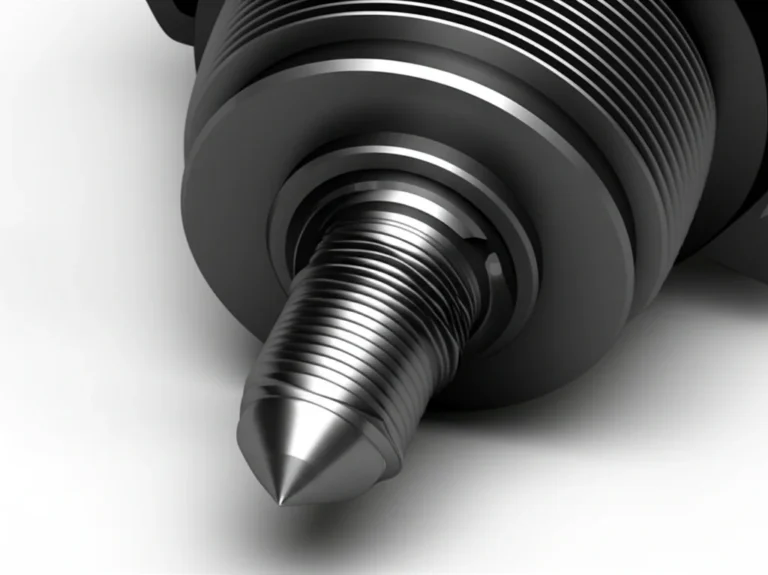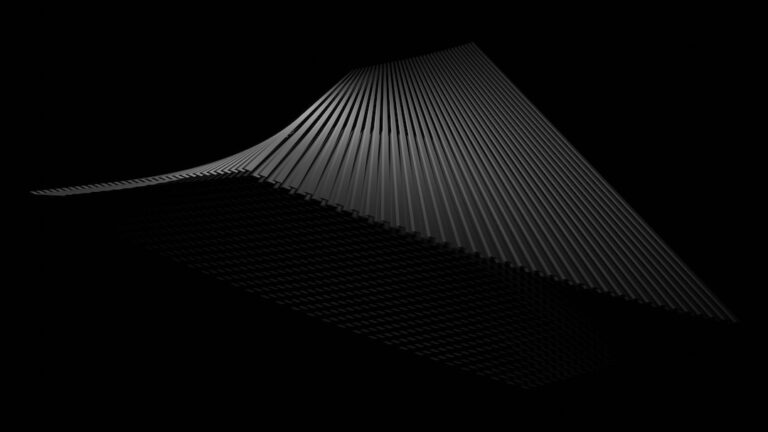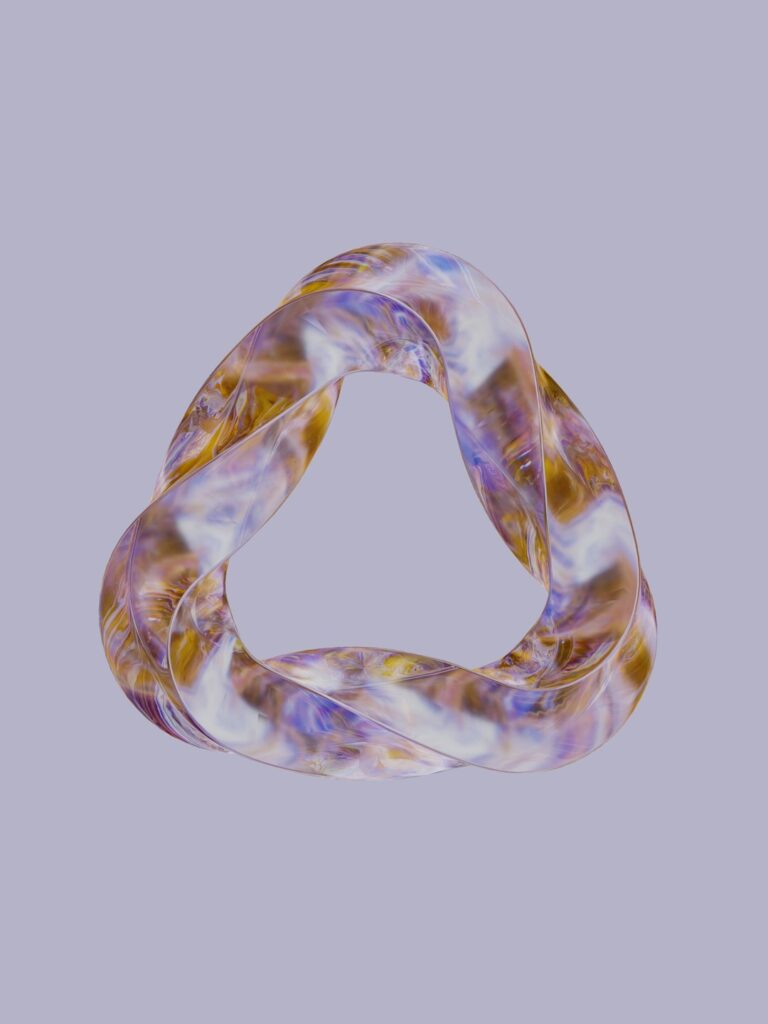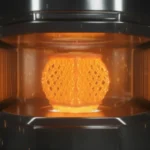Support our educational content for free when you purchase through links on our site. Learn more
🚀 Latest 3D Printing Trends You Can’t Miss in 2025
If you thought 3D printing was just a fun hobby or a prototyping gimmick, think again! The world of additive manufacturing is evolving at lightning speed, reshaping industries from aerospace to healthcare and even construction. Did you know that the global 3D printing market is projected to surpass $50 billion by 2027? That’s not just growth — it’s a revolution. In this article, we’ll unpack the top 10 cutting-edge trends driving this transformation, from AI-powered design and multi-material printing to the rise of large-format machines and eco-friendly materials.
Stick around, because later we’ll reveal why owning a 3D printer might not be the smartest move anymore, and how Asian manufacturers are shaking up the market with affordable, high-quality options. Plus, we’ll peek into the future with predictions on 3D printing’s next big leaps that could change the game entirely. Ready to stay ahead of the curve? Let’s dive in!
Key Takeaways
- 3D printing has transitioned from prototyping to full-scale production across multiple industries.
- AI and machine learning are revolutionizing design optimization and process control.
- Advanced materials like carbon-fiber composites and metal alloys are expanding capabilities.
- Large-format and multi-material printing are enabling new applications and functional integration.
- Asian manufacturers are driving price competition and innovation globally.
- Owning a 3D printer isn’t always the best solution; distributed manufacturing offers flexibility and cost savings.
- Sustainability is becoming a core focus, with recycled and biodegradable materials gaining traction.
Curious about which technologies and materials will dominate your next project? Keep reading to get the full scoop!
Table of Contents
- ⚡️ Quick Tips and Facts About Latest 3D Printing Trends
- 🔍 The Evolution of 3D Printing: From Prototyping to Production Powerhouse
- 1️⃣ Top 10 Cutting-Edge 3D Printing Technologies Shaping the Future
- 2️⃣ Advanced Materials Revolutionizing 3D Printing Capabilities
- 3️⃣ AI and Machine Learning: The Brain Behind Smarter 3D Printing
- 4️⃣ Large-Format and Industrial 3D Printing: Scaling Up Innovation
- 5️⃣ Multi-Material and Hybrid Printing: Blending Possibilities
- 6️⃣ The Impact of Asian Manufacturers on 3D Printing Market Dynamics
- 7️⃣ Industry Consolidation: What It Means for Innovation and Competition
- 8️⃣ Why Owning a 3D Printer Isn’t Always the Best Solution
- 9️⃣ Sustainability and Eco-Friendly Trends in 3D Printing
- 🔮 What’s Next? Predicting 3D Printing’s Next Big Leaps
- 💡 Expert Tips for Staying Ahead in the 3D Printing Game
- 🏁 Conclusion: Embracing 3D Printing as the New Normal
- 🔗 Recommended Links for 3D Printing Enthusiasts
- ❓ Frequently Asked Questions About Latest 3D Printing Trends
- 📚 Reference Links and Further Reading
⚡️ Quick Tips and Facts About Latest 3D Printing Trends
Welcome to the fast lane of 3D printing! Before we dive deep into the latest trends shaping this dynamic industry, here are some quick, must-know facts from the 3D Printed™ team to get your gears turning:
- ✅ 3D printing is no longer a niche hobby — it’s becoming a standard manufacturing tool across industries like aerospace, healthcare, and automotive.
- ✅ AI integration is revolutionizing design and process optimization, reducing waste and speeding up production cycles.
- ✅ Advanced materials like carbon-fiber composites and metal alloys are expanding what’s possible beyond plastics.
- ✅ Large-format 3D printing is breaking size barriers, enabling everything from building walls to turbine blades.
- ✅ Asian suppliers, especially from China, dominate the affordable printer and materials market, pushing global price competition.
- ✅ Distributed manufacturing is on the rise — owning a printer isn’t always the smartest move anymore.
- ✅ Sustainability is becoming a priority, with more eco-friendly materials and localized production reducing carbon footprints.
Curious how all these trends interlock and what they mean for you? Stick around — we’ll unpack each with expert insights, real-world examples, and some juicy insider stories. And if you want to geek out on 3D printable objects, check out our 3D Printable Objects category for inspiration!
🔍 The Evolution of 3D Printing: From Prototyping to Production Powerhouse
3D printing started as a rapid prototyping tool in the 1980s, mostly used for visual models and concept validation. Fast forward to today, and it’s a full-fledged manufacturing technology capable of producing end-use parts with complex geometries and tailored properties.
The Journey in a Nutshell
- 1980s-2000s: Focus on prototyping using stereolithography (SLA) and fused deposition modeling (FDM).
- 2010s: Expansion into tooling and small-batch production; emergence of metal 3D printing technologies like Direct Metal Laser Sintering (DMLS).
- 2020s: Integration with AI, multi-material printing, and large-format machines. 3D printing becomes a key enabler of mass customization and on-demand manufacturing.
Why This Matters
The shift means 3D printing is no longer “just for prototypes” — it’s a strategic manufacturing option. Industries like aerospace and healthcare rely on it for lightweight, durable parts and patient-specific implants. The technology’s flexibility also supports distributed manufacturing, reducing supply chain risks.
Want to see how this evolution impacts your projects? Our 3D Printing Innovations section covers the latest breakthroughs in detail.
1️⃣ Top 10 Cutting-Edge 3D Printing Technologies Shaping the Future
Ready to geek out? Here’s our curated list of the hottest 3D printing technologies making waves in 2024-2025:
| Technology | Key Benefits | Typical Applications |
|---|---|---|
| SLA (Stereolithography) | High resolution, smooth surface finish | Dental, jewelry, prototypes |
| FDM (Fused Deposition Modeling) | Affordable, versatile, wide material range | Consumer products, education |
| DMLS (Direct Metal Laser Sintering) | Strong metal parts, complex geometries | Aerospace, automotive, medical |
| Binder Jetting | Fast, multi-material, cost-effective | Sand casting molds, ceramics |
| Continuous Liquid Interface Production (CLIP) | Ultra-fast, smooth parts | Consumer goods, medical devices |
| High-Speed Sintering (HSS) | Rapid production, scalable | Industrial parts, tooling |
| Multi Jet Fusion (MJF) | Strong, functional parts, good surface | Functional prototypes, end-use parts |
| Electron Beam Melting (EBM) | Dense metal parts, high strength | Aerospace, implants |
| Digital Light Processing (DLP) | Fast, high resolution | Dental, jewelry, miniatures |
| MELD (Metal Extrusion) | No powder, low cost, large parts | Automotive, aerospace |
Why These Matter
Each technology has its sweet spot. For example, DMLS and EBM dominate metal part production with exceptional strength, while FDM remains king for hobbyists and education due to accessibility and cost. The rise of multi-material and hybrid printing (covered later) is also a game-changer, enabling parts with varied mechanical properties in one print.
2️⃣ Advanced Materials Revolutionizing 3D Printing Capabilities
The magic of 3D printing isn’t just in the machines — it’s in the materials. Recent breakthroughs have expanded the palette far beyond PLA and ABS plastics.
Materials Making Headlines
- Carbon-fiber reinforced polymers: Lightweight yet incredibly strong, perfect for aerospace and automotive parts.
- High-performance thermoplastics (PEEK, Ultem): Heat resistant and biocompatible, ideal for medical implants and aerospace components.
- Metal alloys (Titanium, Stainless Steel, Inconel): For parts requiring strength, corrosion resistance, and heat tolerance.
- Ceramics: Used in electronics, aerospace, and medical applications for their hardness and thermal properties.
- Biodegradable and recycled filaments: Supporting sustainability goals with eco-friendly options.
Multi-Material Printing: The New Frontier
Multi-material 3D printing allows combining rigid and flexible materials or conductive and insulating components in a single print. For example, Stratasys’ PolyJet technology can print rubber-like and rigid materials simultaneously, enabling complex functional prototypes or soft-touch grips.
Our Take: The ability to print multi-material parts is a huge leap toward functional integration and part consolidation, reducing assembly steps and improving performance.
3️⃣ AI and Machine Learning: The Brain Behind Smarter 3D Printing
Artificial Intelligence (AI) is not just a buzzword — it’s reshaping 3D printing workflows from design to production.
How AI Is Changing the Game
- Generative design: AI algorithms create optimized, lightweight structures that humans might never conceive. Autodesk’s Fusion 360 and nTopology are leaders here.
- Process optimization: AI monitors print parameters in real-time, detecting errors and adjusting settings to reduce waste and improve quality.
- Automated quoting and material selection: AI-powered platforms like 3YOURMIND speed up order processing and material recommendations.
- Predictive maintenance: Machine learning predicts when printers need servicing, minimizing downtime.
Real-World Impact
We’ve seen firsthand how AI-driven design tools can cut prototyping times by up to 50% while improving part strength. Plus, AI’s role in reducing material waste aligns perfectly with sustainability goals.
4️⃣ Large-Format and Industrial 3D Printing: Scaling Up Innovation
Big things are happening in 3D printing — literally! Large-format printers are enabling the production of massive components once impossible to print.
Applications and Technologies
- Construction: Companies like ICON and Apis Cor 3D print entire houses or building components onsite, slashing construction time and costs.
- Aerospace: Large parts like wing sections and engine components are printed using machines from EOS and Stratasys.
- Energy: Wind turbine blades and power plant parts benefit from large-format printing for custom, lightweight designs.
Challenges and Solutions
- Material consistency: Ensuring uniform properties across large parts is tricky but improving with better process controls.
- Print speed: Innovations like HP’s Multi Jet Fusion and Stratasys Neo800+ (see our 3D Printer Reviews for details) are pushing speeds higher.
- Post-processing: Handling and finishing large parts require specialized equipment and workflows.
5️⃣ Multi-Material and Hybrid Printing: Blending Possibilities
Imagine printing a part with rigid, flexible, conductive, and insulating materials all at once — that’s the promise of multi-material and hybrid 3D printing.
Technologies to Watch
- Stratasys PolyJet: Prints multiple materials with micron-level precision.
- Voxel8: Combines conductive inks with thermoplastics for printed electronics.
- Markforged’s Metal X: Hybrid approach combining metal printing with composite reinforcement.
Benefits
- Part consolidation: Fewer assembly steps, reduced weight, and improved reliability.
- Functional integration: Embedding sensors, circuits, or soft-touch surfaces directly into parts.
6️⃣ The Impact of Asian Manufacturers on 3D Printing Market Dynamics
Asian suppliers, especially from China, have become powerhouses in affordable 3D printers and materials, shaking up the global market.
Market Share and Influence
- China held 28% of the global 3D printing market in 2019, and that share is growing.
- Companies like Creality, Anycubic, and Bambu Lab are known for delivering cost-effective, feature-rich printers.
- Large-scale production and government support enable aggressive pricing and rapid innovation cycles.
What This Means for You
- ✅ Access to affordable printers and materials with decent quality.
- ❌ Increased price pressure on European and American manufacturers, pushing them to focus on value-added features, quality, and sustainability.
- ✅ More choices for hobbyists and small businesses, but beware of quality inconsistencies.
7️⃣ Industry Consolidation: What It Means for Innovation and Competition
The 3D printing industry is experiencing mergers, acquisitions, and exits, leading to a more concentrated market.
Pros and Cons
| Pros | Cons |
|---|---|
| More stable market and reliable suppliers | Less competition could slow innovation |
| Larger companies can invest in R&D and refine products | Smaller startups may struggle to survive |
| Easier for customers to find integrated solutions | Risk of price increases in some segments |
Notable Moves
- Stratasys acquiring companies to expand material portfolios.
- EOS focusing on metal printing leadership.
- HP partnering with DyeMansion for post-processing integration.
8️⃣ Why Owning a 3D Printer Isn’t Always the Best Solution
Owning a 3D printer sounds great, but it’s not always the smartest or most cost-effective choice.
Considerations
- Upfront costs: High-end industrial printers can be a serious investment.
- Maintenance and calibration: Printers require regular upkeep and expertise.
- Material and process knowledge: Selecting the right material and settings is critical for quality.
- Distributed manufacturing: Many companies now outsource printing to specialized service bureaus, gaining access to advanced machines without capital expense.
Our Experience
We’ve seen businesses save time and money by leveraging distributed manufacturing platforms like 3D Hubs or Shapeways, which offer a range of technologies and materials on demand.
9️⃣ Sustainability and Eco-Friendly Trends in 3D Printing
Sustainability is no longer optional — it’s a priority in 3D printing too.
Green Initiatives
- Recycled filaments: Brands like Filamentive offer recycled PLA and PETG with comparable quality.
- Biodegradable materials: PLA remains popular for its compostability.
- Localized production: Reduces transportation emissions and waste.
- Material efficiency: Additive manufacturing inherently reduces scrap compared to subtractive methods.
Challenges
- Energy consumption of some metal printing processes remains high.
- Recycling of composite materials is still difficult.
🔮 What’s Next? Predicting 3D Printing’s Next Big Leaps
Looking ahead, what will 3D printing look like in the next 5 years? Here’s our crystal ball:
- Chemical reaction-based elastomers: Companies like C3D Materials are pioneering industrial-strength flexible parts.
- Powder-free metal and ceramic printing: Technologies like Tritone AM’s Moldjet promise safer, cleaner production.
- Injection molding rivals: Evolve Additive’s STEP technology aims to match injection molding speed and precision for small series.
- Digital Foam and Laser Pro Fusion: EOS’s innovations could revolutionize lightweight, complex parts with faster production times.
- DIY and open-source innovation: As highlighted in the featured video, the DIY community is pushing boundaries with support-free printing and miniaturized multi-material systems.
💡 Expert Tips for Staying Ahead in the 3D Printing Game
- Stay informed: Follow industry news on sites like 3D Printing Industry and 3D Printed™.
- Experiment with materials: Don’t just stick to PLA; try composites, metals, and flexible filaments.
- Leverage AI tools: Use generative design software and AI-driven slicers to optimize prints.
- Consider outsourcing: For complex or large parts, distributed manufacturing can save you headaches and money.
- Join communities: Engage with forums like Reddit’s r/3Dprinting or manufacturer-specific groups to share tips and troubleshoot.
Ready to explore the latest 3D printing innovations and get inspired? Check out our 3D Printing Innovations and 3D Printer Reviews for detailed insights and hands-on experiences!
🏁 Conclusion: Embracing 3D Printing as the New Normal

After our whirlwind tour through the latest 3D printing trends, one thing is crystal clear: 3D printing has evolved from a niche prototyping tool into a cornerstone of modern manufacturing. Whether it’s the integration of AI-driven design, the rise of advanced materials, or the scaling up to large-format industrial printing, the technology is reshaping how products are conceived, made, and delivered.
We’ve seen how Asian manufacturers are shaking up the market with affordable, innovative solutions, while industry consolidation is driving stability and focused innovation. The shift toward distributed manufacturing challenges the old notion that owning a printer is always best, opening doors to more flexible, sustainable production models.
For enthusiasts and professionals alike, the message is clear: embrace these trends to stay competitive and creative. Experiment with new materials, leverage AI tools, and consider hybrid or multi-material printing to unlock new possibilities.
If you’re wondering whether to invest in a 3D printer or rely on service bureaus, think about your production volume, required quality, and expertise. For many, outsourcing complex or large-scale prints is smarter, while owning a versatile desktop printer like the Prusa i3 MK4 or Bambu Lab X1 Carbon (both excellent for beginners and pros) offers hands-on control and rapid iteration.
In short, 3D printing is no longer “the future” — it’s the new normal. And we at 3D Printed™ are excited to help you ride this wave of innovation!
🔗 Recommended Links for 3D Printing Enthusiasts
👉 CHECK PRICE on:
- Prusa i3 MK4:
Amazon | Thingiverse | Prusa Official Website - Bambu Lab X1 Carbon:
Amazon | Thingiverse | Bambu Lab Official Website - Stratasys PolyJet Printers:
Stratasys Official Website - EOS Metal 3D Printers:
EOS Official Website - Filamentive Recycled Filaments:
Filamentive Official Website
Recommended Books:
- 3D Printing: The Next Industrial Revolution by Christopher Barnatt — Amazon
- Additive Manufacturing Technologies by Ian Gibson, David W. Rosen, Brent Stucker — Amazon
- Design for Additive Manufacturing by Martin Leary — Amazon
❓ Frequently Asked Questions About Latest 3D Printing Trends
What are the newest materials used in 3D printing?
The latest materials include carbon-fiber reinforced polymers, high-performance thermoplastics like PEEK and Ultem, advanced metal alloys (titanium, Inconel), and ceramics. These materials offer superior strength, heat resistance, and biocompatibility, enabling applications in aerospace, medical implants, and industrial tooling. Additionally, biodegradable and recycled filaments are gaining traction to address sustainability concerns.
How is AI influencing the latest 3D printing trends?
AI is transforming 3D printing by enabling generative design, which creates optimized, lightweight structures beyond human imagination. It also enhances process monitoring and error detection, reducing waste and improving print quality. AI-driven platforms automate quoting, material selection, and predictive maintenance, streamlining production workflows and reducing downtime.
What industries are adopting 3D printing technology the fastest?
The aerospace and defense sectors lead due to the demand for lightweight, durable components. Healthcare follows closely, with rapid advances in custom implants and dental devices. The automotive industry uses 3D printing for prototyping and functional parts, while consumer goods and industrial manufacturing increasingly adopt additive manufacturing for customization and tooling.
What are the most popular 3D printing designs to try in 2024?
Popular designs include functional prototypes, customized phone cases, wearable tech accessories, miniatures and tabletop game pieces, and home decor items. For professionals, complex lattice structures and multi-material parts showcase the latest capabilities. Explore our 3D Printable Objects for fresh ideas!
How is 3D printing improving sustainability and reducing waste?
3D printing inherently reduces material waste by adding material only where needed, unlike subtractive methods. The rise of recycled and biodegradable filaments further lowers environmental impact. Localized, distributed manufacturing cuts transportation emissions and supports circular economy models. However, energy consumption in metal printing remains a challenge.
What advancements have been made in multi-material 3D printing?
Multi-material printing now allows combining rigid, flexible, conductive, and insulating materials in a single part. Technologies like Stratasys PolyJet and Voxel8 enable functional integration, reducing assembly and enabling embedded electronics or soft-touch surfaces. Rapid material switching and voxel-level control are pushing the boundaries of complexity and performance.
What are the top 3D printers for beginners in the current market?
For beginners, Prusa i3 MK4 and Bambu Lab X1 Carbon stand out for their ease of use, reliability, and community support. Both offer excellent print quality and a wide material range. Entry-level FDM printers like Creality Ender 3 V2 are also popular for affordability and modifiability but may require more tinkering.
📚 Reference Links and Further Reading
- Global 3D Printing Market Size, Share, Latest Trends & Growth | MarketsandMarkets
- Stratasys Official Website
- EOS GmbH Metal 3D Printing
- Prusa Research Official Site
- Bambu Lab Official Website
- Filamentive Recycled Filaments
- 3D Printing Industry News
- Autodesk Fusion 360 Generative Design
- 3YOURMIND AI-Driven Manufacturing Platform
Thanks for joining us on this deep dive into the latest 3D printing trends! Stay curious, keep experimenting, and let’s keep pushing the boundaries of what’s possible with 3D printing. 🚀




